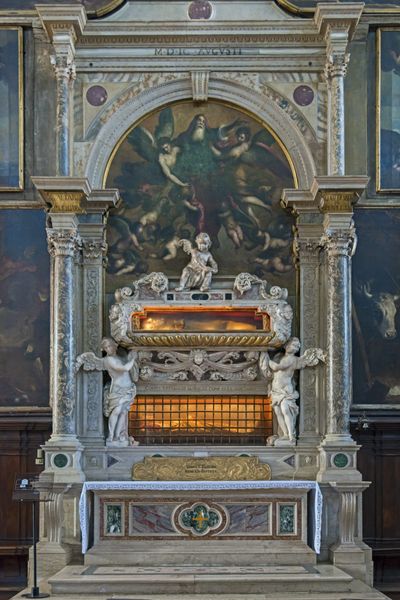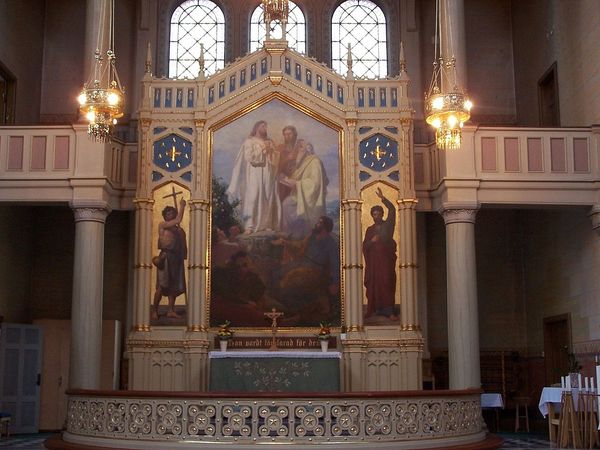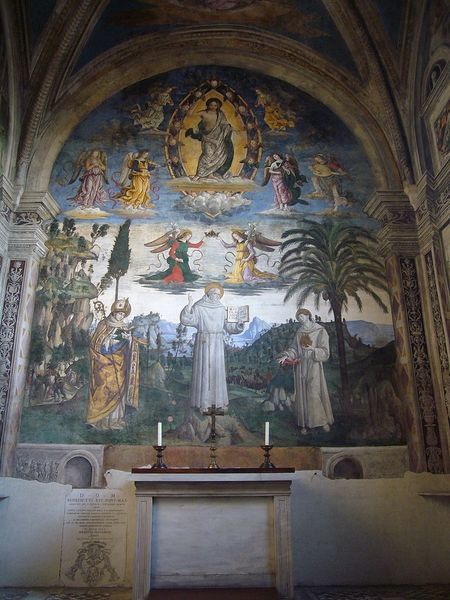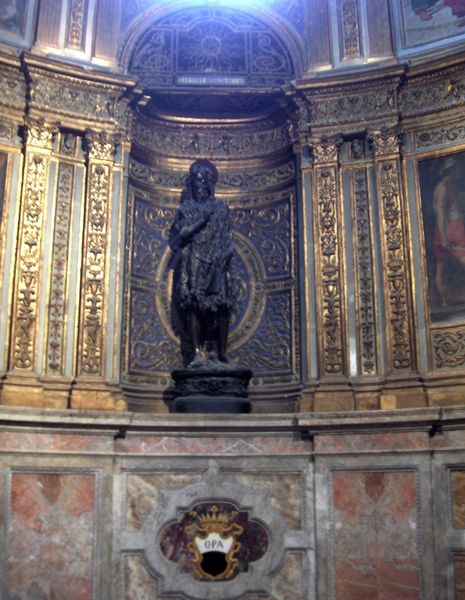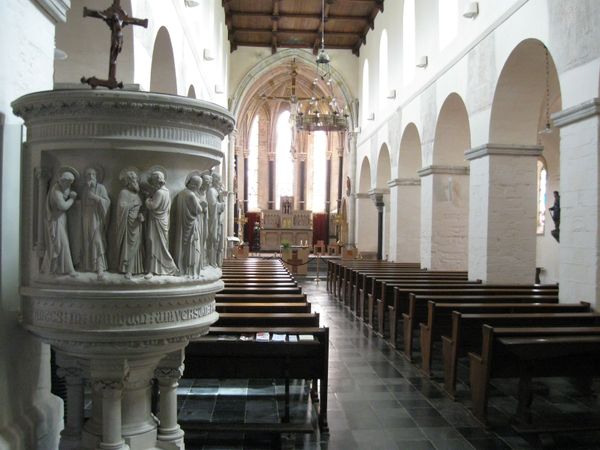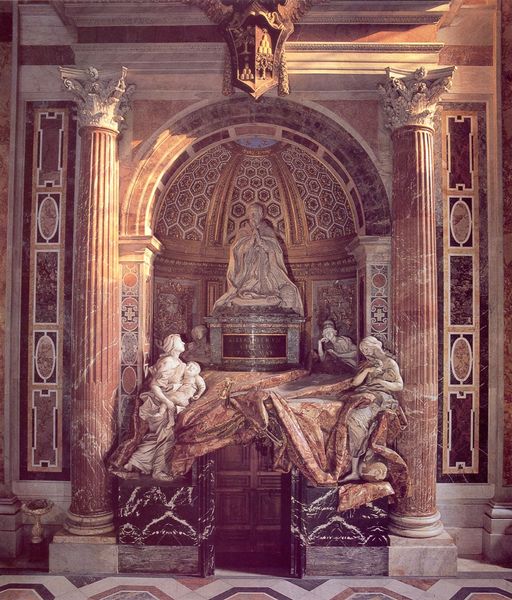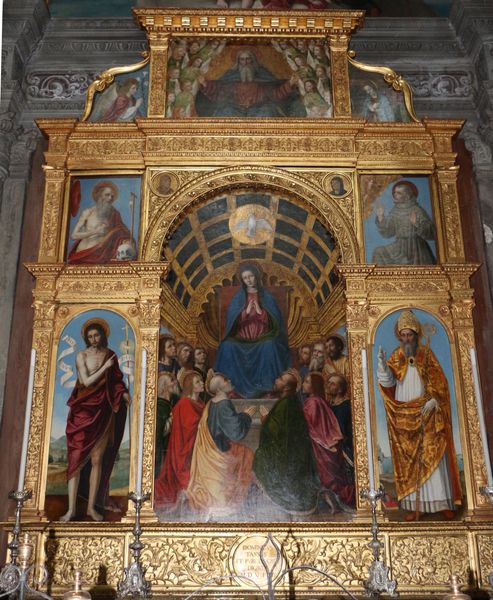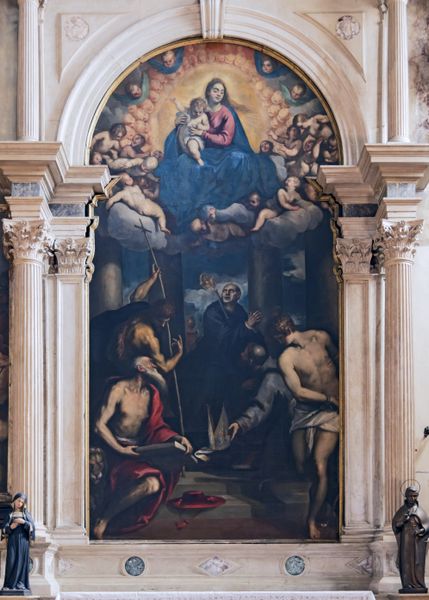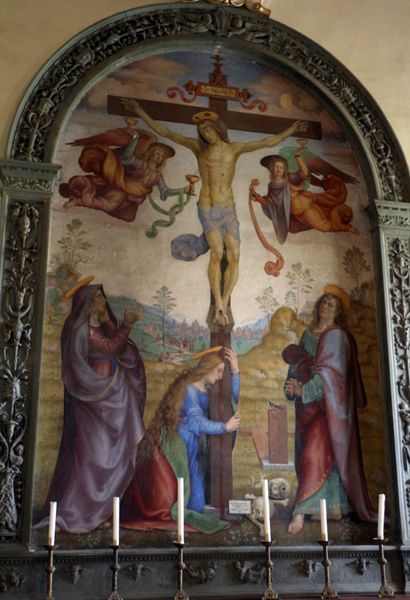
painting, fresco, architecture
#
portrait
#
baroque
#
painting
#
figuration
#
historic architecture
#
fresco
#
traditional architecture
#
history-painting
#
architecture
#
historical building
#
statue
Copyright: Public domain
Mårten Eskil Winge painted this image of Jesus, sometime during his career as a history painter in 19th-century Sweden. The artwork is found in a church that is itself an institution with a history of shaping the production and reception of art. This painting, displayed above the altar, is likely designed to shape religious sentiment. It does so through its visual codes that would have been particularly legible for 19th-century Swedish viewers. The presentation of Jesus references earlier Renaissance traditions of Christian art. It makes use of the established visual language of the church. As historians, we might ask about the other social and cultural forces that shaped the production of this image. Sweden's history of religious reform, its class structure, and the economic conditions of the time, might all have influenced the artwork. Careful historical research can reveal much about the meaning of this image.
Comments
No comments
Be the first to comment and join the conversation on the ultimate creative platform.
